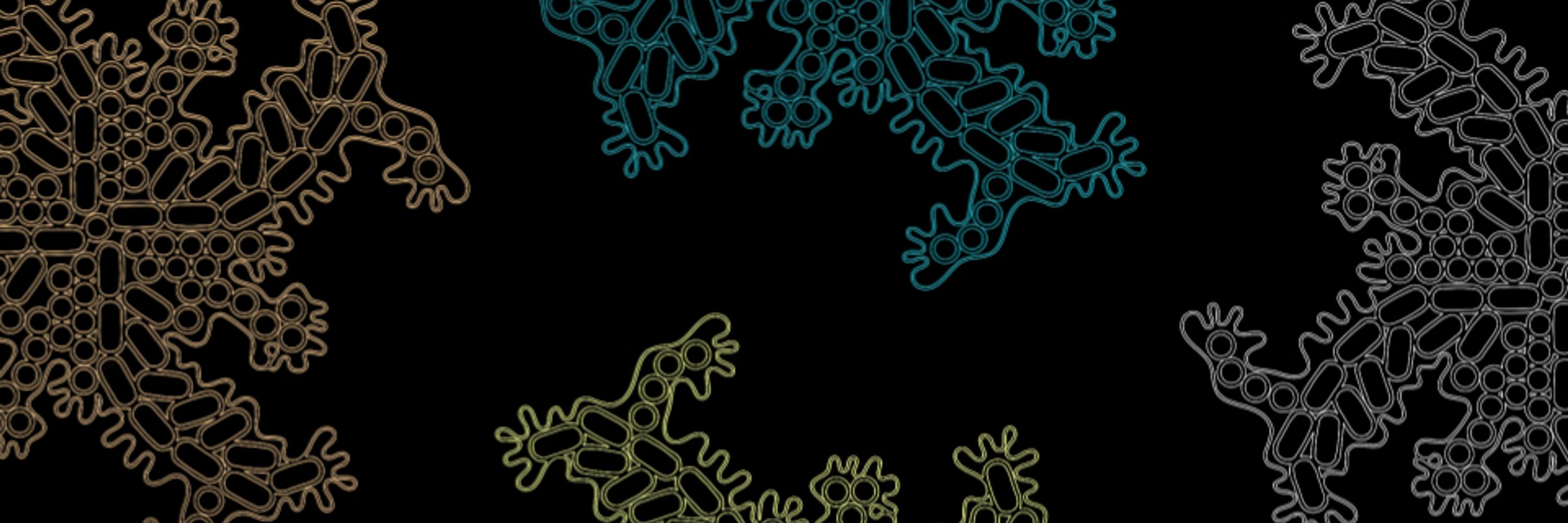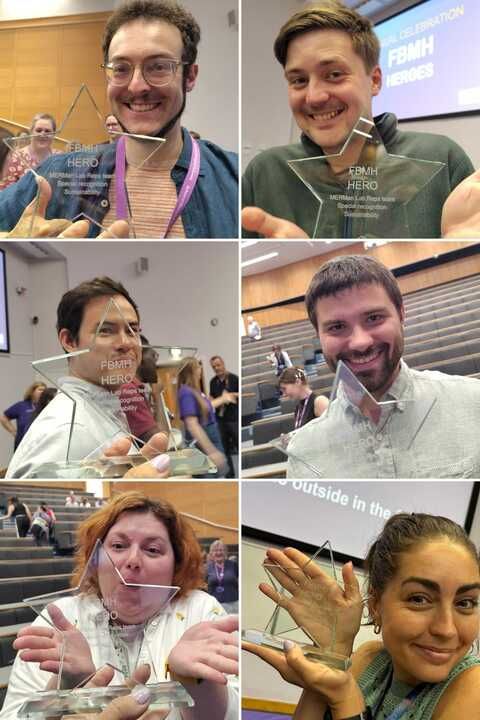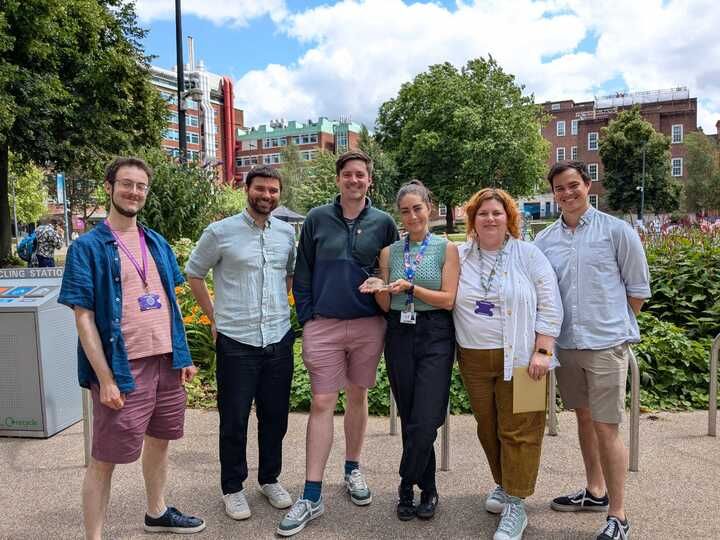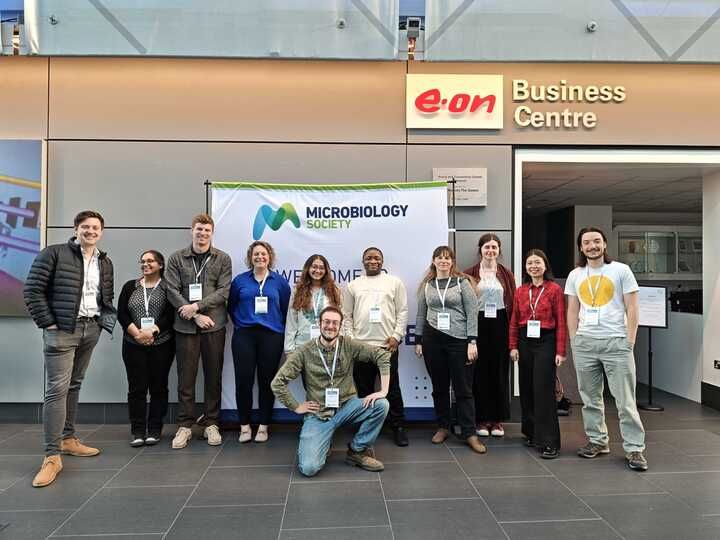
Will Smith
@willpjsmith.bsky.social
I love science! I study toxin interactions in microbes. Dad of two @wellcometrust Sir Henry Wellcome Fellow | All views my own | he/him | 🏳️🌈
Why does this bias results most where the Attacker : Susceptible ratio is high?
Here's a little cartoon explainer:
11/n
Here's a little cartoon explainer:
11/n

August 31, 2025 at 10:24 PM
Why does this bias results most where the Attacker : Susceptible ratio is high?
Here's a little cartoon explainer:
11/n
Here's a little cartoon explainer:
11/n
We also found that, if cell mixtures are pre-incubated in a liquid antibiotic that selects against T6SS attackers, this reduces the bias, especially for longer pre-incubation times.
10/n
10/n

August 31, 2025 at 10:24 PM
We also found that, if cell mixtures are pre-incubated in a liquid antibiotic that selects against T6SS attackers, this reduces the bias, especially for longer pre-incubation times.
10/n
10/n
We found that there was a strong, T6SS-dependent reduction in the number of E. coli c.f.u.s recovered, compared with the “”ground truth” densities we knew we should be getting (plotted here as a pink zone). The deviation tended to increase with increasing Attacker / Susceptible ratio.
9/n
9/n

August 31, 2025 at 10:24 PM
We found that there was a strong, T6SS-dependent reduction in the number of E. coli c.f.u.s recovered, compared with the “”ground truth” densities we knew we should be getting (plotted here as a pink zone). The deviation tended to increase with increasing Attacker / Susceptible ratio.
9/n
9/n
In other words, Kanamycin really isn’t quenching T6SS antagonism effectively in the aftermath of a killing assay, and so you’d predict that you’d get fewer E. coli CFUs as a result.
7/n
7/n

August 31, 2025 at 10:24 PM
In other words, Kanamycin really isn’t quenching T6SS antagonism effectively in the aftermath of a killing assay, and so you’d predict that you’d get fewer E. coli CFUs as a result.
7/n
7/n
We found that T6SS-armed A. baylyi ADP1 bacteria (often used to study T6SSs), will transiently still fire their T6SS harpoons under lethal selective conditions. Here we see ADP1 killing some green E. coli when ADP1 is supposed to be dead!
6/n
6/n
August 31, 2025 at 10:24 PM
We found that T6SS-armed A. baylyi ADP1 bacteria (often used to study T6SSs), will transiently still fire their T6SS harpoons under lethal selective conditions. Here we see ADP1 killing some green E. coli when ADP1 is supposed to be dead!
6/n
6/n
Some background: competition assays are common in microbiology. You mix different populations of microbes (normally 2 types for simplicity), allow them to compete, and then measure how many cells survive from each population, compared with some control where the populations don’t interact.
2/n
2/n

August 31, 2025 at 10:24 PM
Some background: competition assays are common in microbiology. You mix different populations of microbes (normally 2 types for simplicity), allow them to compete, and then measure how many cells survive from each population, compared with some control where the populations don’t interact.
2/n
2/n
Go Team! Deeply honoured that the MERMan lab reps won an @manchester.ac.uk "FMBH heroes" award - thanks @fbmh-uom.bsky.social and @mermanchester.bsky.social for nominating us ❤️❤️❤️


July 2, 2025 at 4:17 PM
Go Team! Deeply honoured that the MERMan lab reps won an @manchester.ac.uk "FMBH heroes" award - thanks @fbmh-uom.bsky.social and @mermanchester.bsky.social for nominating us ❤️❤️❤️
Had a fantastic time at @pintofscience.uk last night! Here I am wobbling on a chair trying to turn a #Phage into a #T6SS. Thanks @magdalenakurteu.bsky.social for the pic!

May 21, 2025 at 9:27 AM
Had a fantastic time at @pintofscience.uk last night! Here I am wobbling on a chair trying to turn a #Phage into a #T6SS. Thanks @magdalenakurteu.bsky.social for the pic!
An excellent showing from @mermanchester.bsky.social at #microbio25!

April 2, 2025 at 6:45 PM
An excellent showing from @mermanchester.bsky.social at #microbio25!
It is bonkers to me that in 2011 this was my bedroom

January 9, 2025 at 9:57 PM
It is bonkers to me that in 2011 this was my bedroom
Some excellent Xmas #boardgames with @mermanchester.bsky.social tonite. Findings:
- it is impossible to express the rules of Wavelength in english
- Articulate is the best party game ever
Team gold ftw
- it is impossible to express the rules of Wavelength in english
- Articulate is the best party game ever
Team gold ftw

December 12, 2024 at 7:53 PM
Some excellent Xmas #boardgames with @mermanchester.bsky.social tonite. Findings:
- it is impossible to express the rules of Wavelength in english
- Articulate is the best party game ever
Team gold ftw
- it is impossible to express the rules of Wavelength in english
- Articulate is the best party game ever
Team gold ftw
(4/6) Why is this important? T6SSs often secrete multiple toxins at once. Our works shows a useful feature of this 'cocktail' strategy: the ability to suppress resistance. This could be a new factor selecting for diversity in T6SS toxin arsenals.

August 2, 2024 at 10:23 AM
(4/6) Why is this important? T6SSs often secrete multiple toxins at once. Our works shows a useful feature of this 'cocktail' strategy: the ability to suppress resistance. This could be a new factor selecting for diversity in T6SS toxin arsenals.
(3/6) We tested this idea by evolving E. coli 🦠 against single- and multi-toxin A. baylyi T6SS attackers. Multi-toxin resistance evolved frequently against toxins Tae1 and Tle1 alone, but when attackers secreted both together, resistance didn't evolve 🙅

August 2, 2024 at 10:22 AM
(3/6) We tested this idea by evolving E. coli 🦠 against single- and multi-toxin A. baylyi T6SS attackers. Multi-toxin resistance evolved frequently against toxins Tae1 and Tle1 alone, but when attackers secreted both together, resistance didn't evolve 🙅
(2/n) In developing computer models of resistance evolution, we found st unexpected 🤯: simulated bacteria rarely evolved resistance when confronted w. multiple T6SS toxins 🙅, but often evolved multi-resistance against single-toxin attackers 🛡️🛡️🛡️(I know, what ????)

August 2, 2024 at 10:21 AM
(2/n) In developing computer models of resistance evolution, we found st unexpected 🤯: simulated bacteria rarely evolved resistance when confronted w. multiple T6SS toxins 🙅, but often evolved multi-resistance against single-toxin attackers 🛡️🛡️🛡️(I know, what ????)

